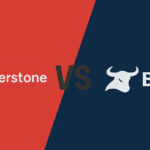In this article, I will Discuss the Best Modular Blockchain Tokens that rework the decentralized world’s ecosystem. They offer customizable and scalable solutions that maximize the blockchain’s capabilities while minimising expenses and enhancing collaboration.
By zeroing in on flexibility and effectiveness, these modular blockchains facilitate the formation of dApps across a wide array of use cases with specific environments best suited to each of them.
Key Point & Best Modular Blockchain Tokens
| Blockchain | Key Point |
|---|---|
| Celestia | A modular blockchain focused on data availability and scalability. |
| Arbitrum | Layer-2 scaling solution for Ethereum that uses optimistic rollups. |
| Optimism | Ethereum Layer-2 protocol using optimistic rollups for scalability. |
| Berachain | A blockchain focused on combining the best features of different consensus mechanisms. |
| Polygon | A multi-chain scaling solution for Ethereum with sidechains and rollups. |
| Osmosis | A decentralized exchange (DEX) built on Cosmos, designed for interoperability. |
| SKALE | A platform offering scalable and flexible blockchain networks for decentralized applications. |
| Marlin | A blockchain-agnostic protocol aimed at improving network performance. |
| Chromia | A relational blockchain platform aimed at decentralized applications with complex data needs. |
| Syscoin | A blockchain platform focused on scaling and interoperability for businesses. |
1. Celestia
Celestia is a modular blockchain that is designed to resolve the scalability problem by separating the consensus from the data availability layer.
It enables independent functioning of different layers of the blockchain, thus making scaling and upgrading effortless.

This modular approach enables greater flexibility in building decentralized applications (dApps), while ensuring security and scalability.
It is one of the best modular blockchain tokens because of its remarkable design, which allows it to scale more effectively than the traditional blockchains.
| Attribute | Details |
|---|---|
| Project Name | Celestia |
| Key Feature | A modular blockchain that separates consensus and data availability layers for scalability and flexibility. |
| Consensus Mechanism | Uses a consensus layer for security and a separate data availability layer, enabling greater scalability. |
| Focus Area | Scalable decentralized applications (dApps), data availability, and blockchain modularity. |
| Scalability | Scales efficiently by decoupling consensus and data availability, allowing for parallel execution of multiple blockchains. |
| Token | TIA (Celestia’s native token) used for staking, governance, and securing the network. |
| Use Cases | Decentralized applications (dApps), data storage solutions, modular blockchain ecosystems, and scalable platforms. |
| Security | Provides high security through its separate consensus layer and allows custom security configurations for dApp developers. |
| Interoperability | Designed to support interoperability between different blockchains by allowing custom blockchains to connect to the Celestia network. |
| Strengths | Innovative modular design for more flexible and scalable blockchain applications without compromising decentralization. |
2. Arbitrum
Arbitrum is an Ethereum Layer-2 scaling solution that implements optimistic rollups for faster transactions with lower fees.

It enables faster and cheaper execution of Ethereum dApps since it processes a large volume of transactions off-chain and only deposits a small amount of data onto the Ethereum main-net.
Therefore, Arbitrum is a great option for developers who want to achieve enhanced scalability without losing the security offered on Ethereum. The token ARB is crucial for governance and rewarding user participation.
| Attribute | Details |
|---|---|
| Project Name | Arbitrum |
| Key Feature | A Layer-2 scaling solution for Ethereum using optimistic rollups to increase transaction throughput and reduce costs. |
| Consensus Mechanism | Optimistic rollups, where transactions are processed off-chain with minimal data posted on Ethereum. |
| Focus Area | Ethereum scalability, lower transaction fees, and faster confirmation times for decentralized applications (dApps). |
| Scalability | Significantly boosts Ethereum’s scalability by moving computations off-chain and ensuring efficient data processing. |
| Token | ARB (Arbitrum’s native token) used for governance, staking, and network management. |
| Use Cases | Ethereum dApps, decentralized finance (DeFi), non-fungible tokens (NFTs), and scaling Ethereum-based projects. |
| Security | Inherits Ethereum’s security model while reducing costs and increasing speed through off-chain computations. |
| Interoperability | Fully compatible with Ethereum, enabling seamless interaction between Ethereum mainnet and Arbitrum. |
| Strengths | High scalability, lower transaction fees, and compatibility with Ethereum’s existing ecosystem, making it ideal for developers looking to scale dApps. |
3. Optimism
An additional Layer-2 solution is Optimism, which, like the others, uses optimistic rollups to scale Ethereum’s transaction throughput.
It hopes to enhance Ethereum’s capacity by executing transactions off-chain and submitting summary data to the Ethereum mainnet.
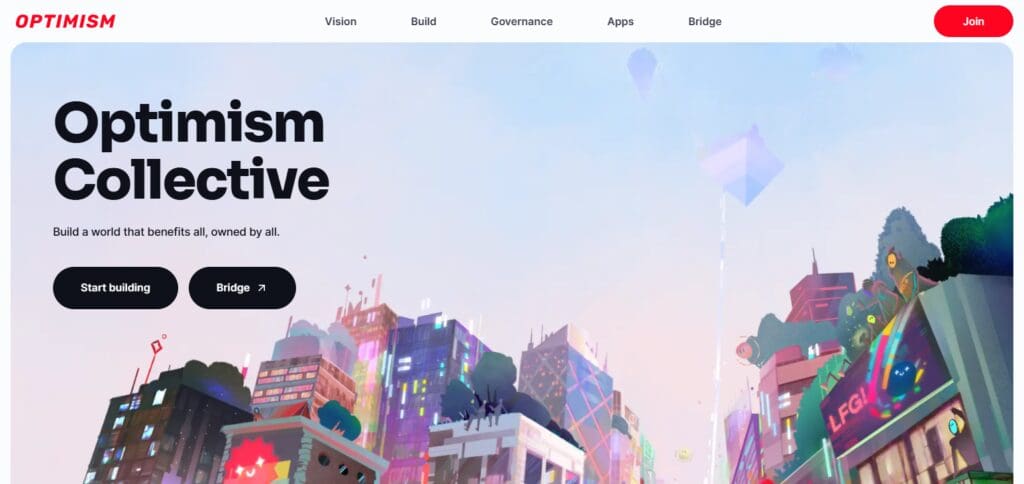
As it is with other Layer-2 solutions, Optimism’s approach alleviates the burden of high transaction fees and network congestion.
This makes Optimism a strong candidate for dApps and DeFi applications. OP, Optimism’s native token, serves as the primary governance token in the network, enabling users to vote on significant issues and make decisions within the ecosystem.
| Attribute | Details |
|---|---|
| Project Name | Optimism |
| Key Feature | A Layer-2 scaling solution for Ethereum using optimistic rollups to increase transaction speed and reduce costs. |
| Consensus Mechanism | Optimistic rollups, where transactions are processed off-chain with data verified on Ethereum. |
| Focus Area | Scaling Ethereum, reducing transaction fees, and improving confirmation times for decentralized applications (dApps). |
| Scalability | Enhances Ethereum’s scalability by executing most computations off-chain, enabling faster and cheaper transactions. |
| Token | OP (Optimism’s native token) used for governance, staking, and securing the network. |
| Use Cases | Ethereum dApps, decentralized finance (DeFi), gaming, non-fungible tokens (NFTs), and scaling Ethereum-based applications. |
| Security | Benefits from Ethereum’s security model while offering a higher transaction throughput and lower fees through Layer-2 technology. |
| Interoperability | Seamlessly integrates with Ethereum, providing developers with an easy path to scale existing Ethereum applications. |
| Strengths | High scalability, lower transaction fees, and seamless integration with Ethereum, making it ideal for scaling Ethereum-based dApps. |
4. Berachain
Berachain is a distinctive blockchain that brings together different consensus mechanisms in order to attain high scalablity and flexibility simultaneously.
It aims creating a more versatile blockchain platform that can efficiently process several types of workloads and transactions.
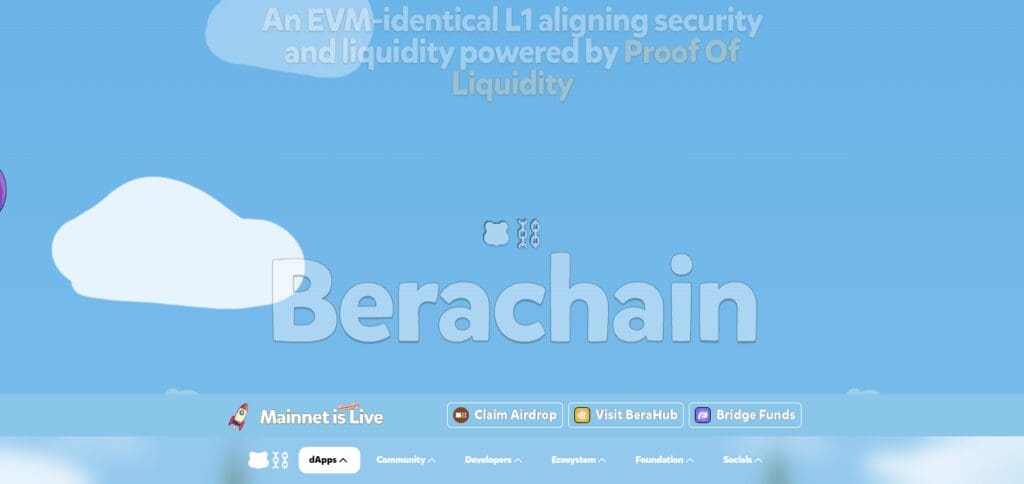
By employing a hybrid consensus model, Berachain provides decentralized applications (dApps) with the needed scalability and security.
The modular blockchain ecosystem is made even more interesting with this bold architectural innovation.
5. Polygon
Polygon is a multi-chain Ethereum scaling solution that was formerly known as Matic Network. Polygon connects Ethereum-compatible blockchain networks and uses sidechains and rollups to increase the transaction rate and decrease cost.

Polygon has as well become popular due to Ethereum’s reputation and the wide adoption of decentralized applications.
Polygon’s goal with MATIC, its native token, is to improve the accessibility and scalablility of the decentralized ecosystem through enhanced interoperability and frictionless transactions.
| Attribute | Details |
|---|---|
| Project Name | Polygon |
| Key Feature | A multi-chain scaling solution for Ethereum that uses sidechains and rollups to improve transaction speed and reduce costs. |
| Consensus Mechanism | Proof of Stake (PoS) and Plasma for sidechains, along with support for various rollup types (Optimistic, ZK-Rollups). |
| Focus Area | Ethereum scalability, interoperability between multiple blockchains, and lower transaction fees for decentralized applications (dApps). |
| Scalability | Increases scalability by utilizing sidechains, rollups, and multiple Layer-2 solutions to significantly improve throughput and reduce congestion on Ethereum. |
| Token | MATIC (Polygon’s native token) used for staking, governance, and paying for transaction fees on the network. |
| Use Cases | Ethereum dApps, decentralized finance (DeFi), gaming, NFTs, and cross-chain interoperability. |
| Security | Built on Ethereum’s security model, providing strong security while enabling faster and more affordable transactions via Layer-2 solutions. |
| Interoperability | Supports cross-chain interactions, allowing various blockchain networks to communicate with each other, thus improving scalability and flexibility. |
| Strengths | High scalability, low transaction fees, and a robust ecosystem that supports both Ethereum and other blockchain projects. |
6. Osmosis
Osmosis is a decentralized exchange (DEX) protocol on the Cosmos blockchain that aims to improve it’s cross-chain trading capability.
Osmosis users can now swap assets from multiple blockchains under the Cosmos umbrella.
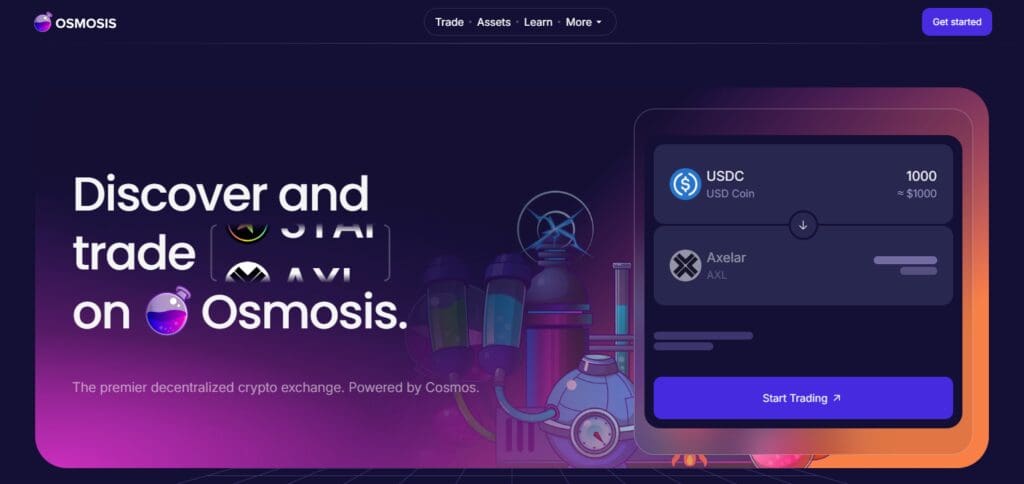
Osmosis is unique for its innovative automated market maker (AMM) protocol allowing users to configure the parameters of liquidity pools and token swaps to greater extent.
As the Cosmos and cross-chain popularity grows, Osmosis will be the primary decentralized finance platform on the Cosmos network, which makes it a critical platform osmosis is a key player.
| Attribute | Details |
|---|---|
| Project Name | Osmosis |
| Key Feature | A decentralized exchange (DEX) built on the Cosmos blockchain, designed for cross-chain interoperability and liquidity pools. |
| Consensus Mechanism | Tendermint consensus, providing high throughput and fast finality. |
| Focus Area | Cross-chain decentralized exchange, liquidity pooling, and interoperability within the Cosmos ecosystem. |
| Scalability | Scalable decentralized exchange platform within Cosmos, allowing seamless cross-chain token swaps and liquidity provision. |
| Token | OSMO (Osmosis’s native token) used for governance, staking, and rewarding liquidity providers. |
| Use Cases | Decentralized finance (DeFi), token swaps, liquidity provision, and interoperability between Cosmos-based blockchains. |
| Security | Secures transactions and ensures consensus with the Cosmos network’s consensus mechanism (Tendermint), offering fast and reliable finality. |
| Interoperability | Built on Cosmos, allowing assets to be swapped across different Cosmos-based blockchains and facilitating cross-chain liquidity. |
| Strengths | Focuses on cross-chain liquidity, a decentralized exchange with strong interoperability features, and easy access to DeFi opportunities in the Cosmos ecosystem. |
7. SKALE
The purpose of SKALE is to provide a network that allows for customized blockchains that operate on Ethereum’s ecosystem, but have the ability to self-scale to create or process numerous transactions simultaneously.
SKALE is a customizable and decentralized application framework that operates on a blockchain infrastructure.
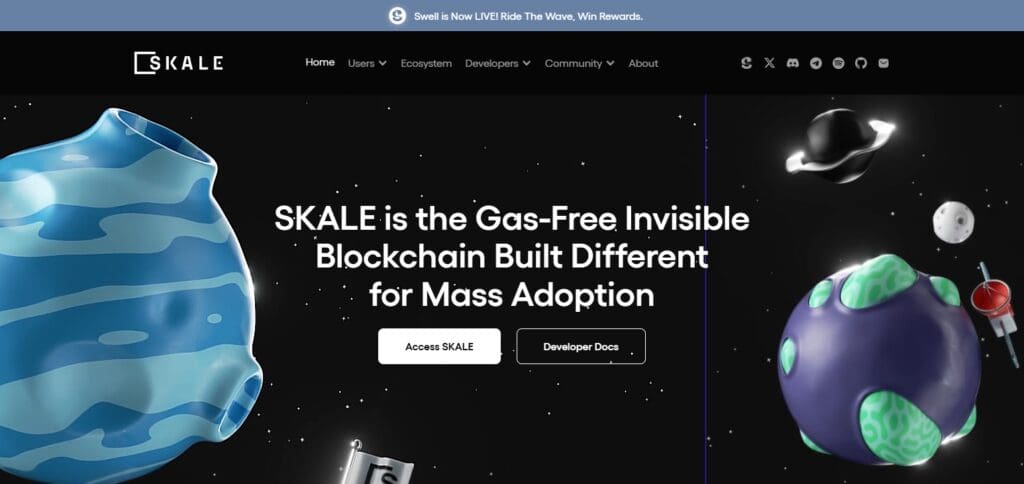
It employs a SKL token which is utilized for paying the expenses of network management and makes it possible for token holders to vote.
Due to its quick speed and effectiveness, SKALE is an excellent option for projects where effective scaling is essential.
| Attribute | Details |
|---|---|
| Project Name | SKALE |
| Key Feature | A decentralized network that allows developers to create highly scalable and customizable blockchains for decentralized applications (dApps). |
| Consensus Mechanism | Proof of Stake (PoS) with a network of validator nodes to provide security and scalability. |
| Focus Area | Scalable blockchain solutions for decentralized applications, allowing for customizable blockchains and high throughput. |
| Scalability | Provides a scalable solution by enabling the creation of sidechains that can operate independently while being highly optimized for performance. |
| Token | SKL (SKALE’s native token) used for staking, governance, and securing the network. |
| Use Cases | Decentralized applications (dApps), gaming, financial services, and enterprise blockchain solutions. |
| Security | Provides security through Proof of Stake (PoS) and a decentralized validator network, ensuring fast and secure transactions. |
| Interoperability | Supports interoperability with Ethereum and other blockchains, offering developers a flexible environment to build scalable applications. |
| Strengths | Highly customizable blockchains, fast transaction processing, and the ability to scale applications with low fees and high efficiency. |
8. Marlin
Marlin is a system dedicated towards enhancing the performance and speed of a blockchain network while keeping it decentralized.
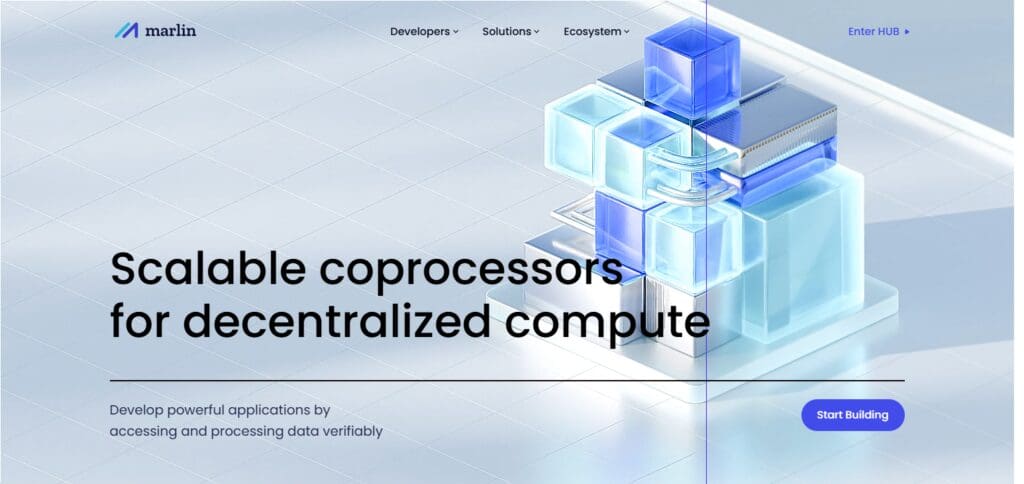
POND tokens are used for staking, voting, and compensating users for their participation in the network.
Marlin attempts to ensure that any ecosystem of blockchain is stable in structure and capable of offering high performance and low latency..
9. Chromia
Chromia is a relational blockchain platform tailored to decentralized applications demanding elaborate data organization systems.
Instead of traditional blockchain storage, which is not as effective as some applications would need, Chromia facilitates the use of familiar relational databases for dApp development.

Chromia permits the effortless control of vast amounts of data on a decentralized network, thus providing great value for games, financial services, and social applications.
CHR, the platform’s token, serves governance and transactional purposes on the network.
| Attribute | Details |
|---|---|
| Project Name | Chromia |
| Key Feature | A relational blockchain platform that enables decentralized applications (dApps) with complex data requirements, utilizing relational databases. |
| Consensus Mechanism | Proof of Stake (PoS) for network validation, ensuring security and decentralized governance. |
| Focus Area | Data-intensive decentralized applications, providing a database-like structure for blockchain-based projects. |
| Scalability | Scales efficiently for applications that need complex data storage and processing, offering flexibility and high performance. |
| Token | CHR (Chromia’s native token) used for governance, staking, and rewarding participants in the network. |
| Use Cases | Gaming, finance, social networks, and any application that requires complex, relational data management on the blockchain. |
| Security | Ensures security with PoS and decentralized governance, while also offering a high level of data integrity and reliability. |
| Interoperability | Compatible with other blockchain networks, providing an efficient and scalable solution for complex dApp development. |
| Strengths | Focuses on combining blockchain technology with relational database capabilities, making it ideal for data-heavy and complex applications. |
10. Syscoin
Syscoin is a blockchain platform for enabling the creation of scalable and interoperable business applications.
It does this by combining the pros of traditional blockchain and centralized systems and having features like tokenized assets, private transactions, and decentralized marketplaces.
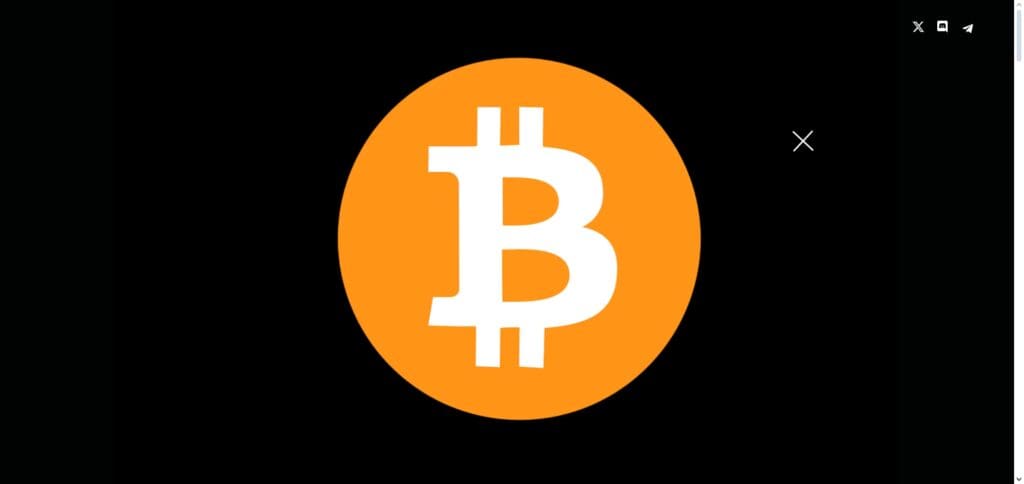
With Syscoin, enterprises gain the ability to scale their services while ensuring their security with fast, safe, and dirt-cheap transactions.
The token SYS is used for governance purposes and as the means of payment within the Syscoin ecosystem.
| Attribute | Details |
|---|---|
| Project Name | Syscoin |
| Key Feature | Combines the benefits of blockchain and traditional centralized technologies for businesses. |
| Consensus Mechanism | Proof of Work (PoW) with hybrid features for scalability and interoperability. |
| Focus Area | Scalable decentralized applications, tokenized assets, private transactions, decentralized marketplaces. |
| Scalability | Offers high throughput and scalability by integrating with existing infrastructure and features like the Syscoin Bridge. |
| Token | SYS (Syscoin’s native token) used for transactions, staking, and governance within the network. |
| Use Cases | E-commerce, supply chain, tokenized assets, decentralized finance (DeFi), and business applications. |
| Security | Provides secure, private transactions with a focus on enterprise-grade solutions. |
| Interoperability | Built with interoperability in mind, allowing assets and data to move across different blockchains. |
| Strengths | Combines decentralized aspects with centralized features for faster and more efficient business operations. |
Conclusion
The emergence of modular blockchain tokens is changing the world of blockchain for the better. Celestia, Arbitrum, Polygon and Osmosis improve scalability, decrease costs, and increased interoperability in many industries like decentralized finance (DeFi), gaming, and NFTs.
These platforms help builders to customize the token-creation process with specific security requirements which in turn helps them build secure decentralized applications (dApps).
In the wake of further blockchain development, these tokens will help fuel innovation, enhance functionality, and support another wave of decentralized applications spanning many industries.










